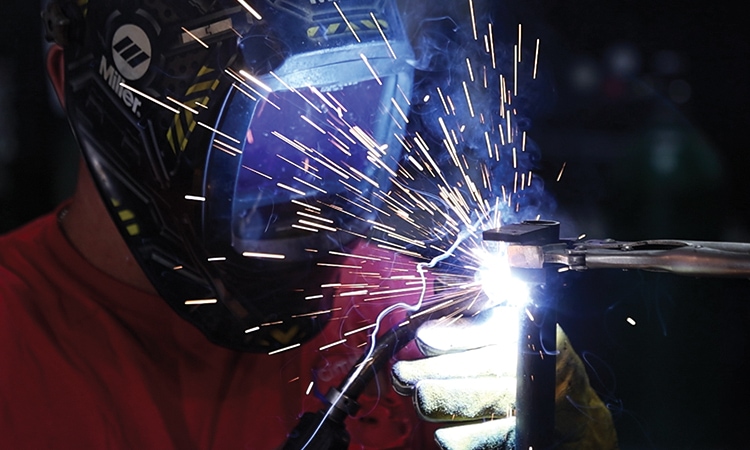Gaining Visibility to Supply Chain Blind Spots

Keeping supply chain risks in your line of sight can protect your profits, people, and productivity.
Blind spots in a supply chain can leave organizations struggling to respond to changes and disruptions. These blind spots can range from a pandemic to a local labor strike. They also encompass shocks internal to an industry, such as changing consumer tastes or the entrance of market disruptors.
Additional risks that can result from unaddressed blind spots include wasted labor and inaccurate forecasts and commitments, says Carly West, senior director analyst with Gartner’s supply chain practice. These drive up transportation and inventory costs, among other expenses.
Putting Your Company’s Reputation at Risk
An inability to monitor suppliers’ practices creates ethical and compliance risks, given consumers’ rising expectations of social and environmental sustainability.
“Brands and retailers need to be able to ensure every supplier they use, even a backup supplier, meets their company’s standards,” says Eric Linxwiler, senior vice president of TradeBeyond, a provider of extended supply chain management solutions for retailers.
Are You Missing Sales Opportunities?
Poor supply chain visibility can mean missed opportunities, says Bart De Muynck, strategic advisor with Mojix, a provider of item chain management solutions.
For instance, customers who can’t locate misplaced items may leave a store without purchasing anything. Or, they might ask a salesperson to order the items, needlessly adding inventory.
Visibility allows companies to capture sales and provide a solid customer experience, without inflating inventory or shipping costs.
Minimizing Surprises
In supply chain operations, surprises due to poor visibility are rarely positive events, says Andrew Tait, managing director with Sigma7, which provides risk management capabilities.
Generally, it’s more effective to use visibility insights to understand and prepare for what otherwise would be a surprise.
Boosting Visibility to Suppliers
A first step in boosting visibility to suppliers is identifying all suppliers and assessing how they fit into the supply chain.
This analysis should include the degree to which the company depends on each vendor. A supplier that offers a commodity for which substitutes are readily available is likely less of a risk than one that provides a critical material for a key product and that isn’t easily replaced.
Tait recalls working with a pharmaceutical company that offered a tableted drug with sales in the billions. The company used talcum powder to keep the tablets from sticking together and held several months of safety stock.
Yet the company sourced the powder from a single vendor. If the vendor was unable to supply the powder, the company’s ability to make this product would be compromised for more than one year, while it sought FDA approval for a new vendor.
Billions in sales were exposed, even though a year’s supply of the talcum powder ran about $1,000.
Visibility can help companies focus on “the value at risk,” Tait says. When companies assess links in their supply chains, they can ask: If this goes wrong, what is the value at risk? And, what might cause things to go wrong?
Stay Aware of Internal Disconnects Between Functions
It’s not only external events that are of concern. Many supply chains are siloed within organizations. Blind spots to internal actions can also hamper performance.
Subodha Kumar, professor of statistics, operations, and data science at Temple University, recalls a food company that offered discounts to customers who ordered in bulk. However, poor visibility and communication between sales and operations meant supply chain costs spiked because of the promotion.
Blind spots can also occur in the disconnect between design and fulfillment. The engineers responsible for product design may lack a comprehensive understanding of the component lifecycle, and so may incorporate obsolete or hard-to-source parts in their designs. That can lead to disruptions in production and supply chain continuity.
“Engineers must be educated about the lifecycle of components, emphasizing the importance of choosing readily available and long-life parts,” says Doug Adams, senior vice president, global logistics, with Avnet, a distributor of electronic components.
Striving for Consistent and Complete Visibility
Even solutions that provide shippers and carriers end-to-end views of the shipments and inventory in their networks, such as RFID and integration with trading partners, can experience gaps. These might result from user error, a network node with limited technology, or a third-party logistics service provider that doesn’t offer visibility to goods in transit.
“The primary challenge is gaining complete, consistent visibility,” says Adam Mussomeli, supply chain and network operations leader with Deloitte Consulting.
The good news? Technology providers are beginning to acknowledge this challenge and are enhancing solutions to address it. For example, some logistics companies can provide visibility at the item and shipment level, based on data from carriers across the globe.
Building end-to-end supply chain visibility also requires gaining visibility into each function or segment of the supply chain. Because transportation is a large part of this, companies are investing in solutions to address transportation visibility challenges.
For instance, for in-transit goods, companies are using real-time transportation visibility platforms, transportation management systems, and Internet of Things (IoT) devices, among other solutions.
Multi-Organization Solutions Provide Visibility

Cimtech, which manufactures precision machined parts, welding, tube bending, and assembly for all types of industries, worked with General Electric Appliances (GEA) to gain visibility to projects that could reduce downtime and increase safety in GEA plants.
Historically, information-sharing has been handled through one-to-one connections between a supplier and customer. As supply chains have become more complex, companies need solutions that work across multiple organizations. Technology like blockchain and IoT can facilitate this.
Additional options include digital solutions, such as multi-enterprise supply chain platforms. Extending visibility across the entire supply chain, including upstream and downstream partners, into a unified platform creates a “control tower” view that enables real-time decision-making and enhances agility.
Gaining Predictive Insight and Visibility With AI
Artificial intelligence (AI) can help supply chain organizations gain both visibility and predictive insight. Say a store is scheduled to receive a pallet of products from a distribution center. When it enters the loading dock, computer vision with generative AI can detect the pallet.
Generative AI models can also be trained to understand the normal distribution of products on a pallet. Deviations from this expectation can then be flagged as anomalies, indicating potential product shortages. “Instead of a person inspecting the pallet, technology generates the data,” says De Muynck.
Visibility in the Yard
Solutions for visibility outside the warehouse or distribution center are also advancing. While yard management systems still manage moves and appointments, the technology that informs these systems is changing.
Along with RF terminals and barcodes that can track trailers, drones can travel a yard and determine the location and movement of the trailers in real time.
Trust Builds Visibility
Tackling blind spots requires a sense of trust that allows companies to confidently share information with suppliers and business partners.
For example, Mammoth Security, a security systems provider, invested in advanced inventory management software that provides real-time data to improve demand forecasting and inventory tracking accuracy. This helps minimize downtime, streamline operations, and boost client satisfaction.
The company has also strengthened relationships with its suppliers through regular communication, fostering trust. “This proactive approach helps us stay ahead of potential disruptions and maintain a smooth supply chain,” says Eugene Klimaszewski, president.
Talent Drives Visibility
Tackling supply chain blind spots requires access to relevant talent. As logistics becomes more technology-based, employees need to be similarly tech-savvy. “Leveraging technology can help to not only drive innovation, automation, and cost savings, but also attract and retain talent,” West says.
Improving Performance
As important as visibility is, it’s not enough.“Once organizations have gained new or quicker information, they need to consider what it means for how they operate,” Mussomeli says.
Better visibility should enhance operations. “You hear the saying, ‘don’t waste a good crisis,’” Spears says. Given the supply chain challenges of the past few years “we took the opportunity to improve ourselves,” he adds. n
GE Appliances Plugs Into Local Suppliers
 Over the past few years, a key strategic element at GE Appliances (GEA) has been developing and growing its local supplier base. Since 2016, GEA has boosted spending with U.S. suppliers nearly three-fold, while increasing its supplier base by 233%.
Over the past few years, a key strategic element at GE Appliances (GEA) has been developing and growing its local supplier base. Since 2016, GEA has boosted spending with U.S. suppliers nearly three-fold, while increasing its supplier base by 233%.
This approach reduces risk by shortening delivery times, improving communication, and reducing transportation costs. It also allows for better control and visibility over the supply chain, as it reduces dependency on distant suppliers, and mitigates risks associated with geopolitical issues or trade restrictions.
“Growing our U.S. supply base, and specifically a regional supply base around our plants, enables us to work closely with our suppliers to achieve our goals,” says J Lionel Ramirez, vice president and chief procurement officer.
Early 2023 also saw the introduction of the GE Appliances Launchpad program. Designed to grow and develop diverse-owned suppliers, this program educates participants on GEA’s supply chain needs, among other information.
GEA worked with a Launchpad graduate, Cimtech Inc., a certified woman-owned business and manufacturer of precision machine parts and other products based in New Albany, Indiana. The two companies identified projects that could reduce downtime and increase safety in GEA plants. Cimtech provides a number of products and services, including channel weldments and justifier bar mounts, and will be part of future plant projects intended to reduce downtime.
Rhee Bros Gains real-time Visibility to Deliveries

Rhee Bros is one of the largest importers and distributors of Pan-Asian food in the United States. Because most of the company’s customers are in the grocery business, Rhee Bros experienced a spike in volumes during the pandemic and needed to scale quickly, says company president Robin Rhee.
To accomplish this, the company had to make several changes, including quickly expanding its fleet to service a growing customer base located across a larger geographic footprint. On top of that, it had to do this when available truck capacity and drivers were nearly impossible to find.
Rhee Bros has been working with Ryder, a provider of supply chain solutions, for more than 20 years, so Ryder is tightly integrated into Rhee Bros’ business. RyderShare, a visibility and collaboration platform from Ryder, has been key to addressing the challenges Rhee Bros faced.
RyderShare enables everyone involved in moving goods through a supply chain—from shippers to receivers to carriers and service providers—to easily see across the supply chain in real time, says Paul Woodmansee, Ryder’s director of customer logistics. They then can work together to prevent costly delays and find efficiency gains.
“Rhee Bros. and our customers can easily see where all of our deliveries are at any time, exactly what’s in them, and the minute they’ll arrive at their destinations,” Rhee says. With this information, Rhee’s customers can be staffed for deliveries and communicate with their customers as well.
If an issue arises with a delivery, Rhee and his team can see it in real time and work collaboratively to minimize delays. The data and insight have helped Rhee Bros improve delivery route planning, positively impacting productivity and profitability.
Lexmark Plays Shortstop

As disruptions upended many supply chains over the past few years, Lexmark, a provider of printing and imaging solutions, confronted multiple component shortages, as well as challenges in predicting component availability.
“We needed a different visibility tool to understand and react to the component shortages,” says Billy Spears, senior vice president and chief product delivery officer.
While Lexmark had enjoyed good visibility to its tier one suppliers, visibility to its other suppliers wasn’t as strong. To change this, Spears and his colleagues created a new system: Shortstop. While “nothing fancy,” he says, it ties the engineering record system, which contains the bills of materials for all products and other information, to suppliers across all tiers in the company’s supply chain.
Lexmark now can better predict when shortages might occur. It can optimize manufacturing and commit to a production schedule, even when the broader supply chain world of components remains in crisis. “There are multiple paths to recovery if you know about a shortage,” Spears says, noting that Lexmark can find additional suppliers, shift vendors, or in some cases, shop on the open market.
Also during this time, the container shortage was extending lead times and impacting Lexmark’s ability to get products to customers. To address this, Lexmark increased the number of carriers in each geographic region from one to four.
The company then needed visibility across its carriers, as well as a method for managing allocations between them. Spears and his team engaged a third-party software solution that leverages EDI to link Lexmark’s ERP system with its carriers.
Lexmark can allocate products based on rules it has established, and accounting for cost, availability, and other factors. The system also provides visibility and estimated arrival times for the containers, further boosting flexibility and capacity.
Both projects were up and running in a matter of months. “It was a quick return on investment,” Spears notes.
